

Partial Hospitalization Programs (PHPs) for Addiction Treatment
Partial hospitalization programs (PHPs) offer intensive, structured addiction treatment during the day while allowing you to return home at night—bridging the gap between inpatient rehab and standard outpatient care. Discover how partial hospitalization programs work, who they’re right for, what they cost, and how to choose a PHP that fits your life, budget, and recovery goals.
Best Partial Hospitalization Programs
| Name / Address / Rating | Description | Treatments / Payments / Programs | Review / Contact | Images |
|---|---|---|---|---|
1
Top 10 in Partial Hospitalization Program
| Soberman’s Estate, located in Cave Creek, Arizona, is an alcohol and drug rehab center that provides addiction treatment services to adult men, professionals, and public figures. They are a discrete, luxury rehab for individuals aged 30 to 80 years old. This location caps their treatment center at ten men at a time. Soberman’s Estate focuses on | Treatments Programs Payment Options | Soberman’s Estate was everything I needed for my recovery. The staff, the program, physical activity and culinary experience were top notch and essential. The program is well designed and worked better than I expected. The staff is remarkable – professional, considerate and genuinely caring. My time there and being removed from alcohol for five weeks was everything I needed to remove my craving for alcohol. Soberman has changed my life in ways I never could have imagined. I feel confident, secure and grateful for my new life. I have reconnected with my family and friends. Thank you Soberman.
George B.
1 month ago
Yes, very professional staff, treatment, therapist, chefs were good! even the home cook did the best she could, and loved the horses of Course! Saturday morning hiking was fun to explore the trails of the nearby mountain area!
John E Williams
2 months ago
I had a great experience overall and would recommend it to anyone wanted to jump start their sobriety!!
Kevin Crawford
2 months ago
| 
5 5 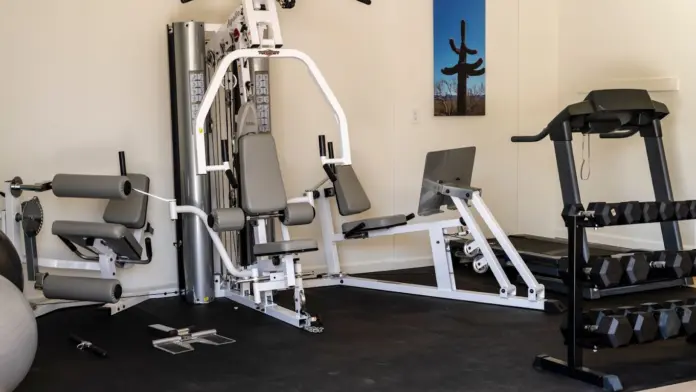



|
2
Top 10 in Partial Hospitalization Program
| Avenues Recovery Center in Clarksville, Indiana, is an inpatient drug and alcohol detox and rehab center. They strive to provide individuals receiving treatment with a loving environment and attentive medical care. You’ll be away from toxic environments and triggers and have the opportunity to focus on developing life skills that will support you | Treatments Programs Payment Options | This place is amazing, they will show you how to redirect you life for the better. Don’t knock it until you have tried it
Courtney Weaver
6 days ago
Avenues is beyond amazing!!💗🙌🏼 The support, both staff & clients is amazing. The curriculum is so life changing centered around your addiction as well as mental, emotional & physical health. I finally understand it all which really helps finally knowing what to do!!
Sara Eddelman
6 days ago
Avenues Recovery center is a very good place love the staff love the facilitators love the case managers there’s a lot of good help here
Joshua Levi Johnson
1 week ago
| 
4 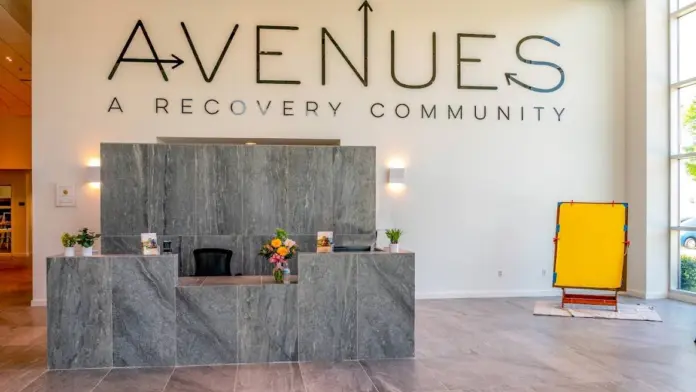


|
3
Top 10 in Partial Hospitalization Program
| All In Solutions Detox in Simi Valley is one of the best ranked inpatient detox facilities in California providing safe, medically supervised care for individuals beginning their recovery from drug or alcohol addiction. As part of the All In Solutions Behavioral Health network, this facility serves as the first step in a full continuum of care. Cli | Treatments Programs Payment Options | Excellent staff and service. Very comfortable experience. Highly recommend. The support here is amazing.
Cody Knight
3 days ago
Great staff every one is nice and treats everyone with respect great environment and energy
Ramon Ruiz
6 days ago
I had a great experience love this place they got me on the right track! Great staff and great med team! ♥️♥️
Rachel Luna
1 week ago
| 
5 5 



|
4
Top 10 in Partial Hospitalization Program
| Symetria – Hurst Outpatient Rehab and Suboxone Clinic in Hurst, Texas, is a private drug rehabilitation clinic for adults. The CARF accredited clinic offers various withdrawal medications to help clients get started with their recovery journey. You’ll also have access to treatments such as the intensive outpatient program (IOP), one on one | Treatments Programs Payment Options | Symetria is unbelievably amazing!!! The Hurst staff is phenomenal!!! I can’t imagine that another location has a better staff. A special shout out to Deborah, Benjamin, and Samantha of course. You all are doing amazing, amazing, selfless work. You all are very special to so many!!!
Vernon Godsey III
1 month ago
Huge shout out to the team at symetria who make me feel like family I appreciate everything they do and huge shout out to Osagie for helping me! He is AWESOME!!! I love you symetria❤️❤️❤️
Chloe Roseman
2 months ago
BEST PLACE EVER. I have tried various other doctors/clinics and none of them even begin to compare to this one. The staff here is absolutely amazing. I can’t even make a single complaint. Dr Son is the best as well. He explains everything and you truly feel like he understands you. I can proudly say this, this place saved my life. If you or someone you know needs help getting off opiates do it right the first time and come here. You won’t be disappointed. If you are specifically struggling with fentanyl please don’t waste your time with other ways. I have tried 6 other methods from lazer therapy to having the earpiece to suboxone. Methadone is the key to our current fentanyl crisis. This clinic makes recovery possible again!
Mason
2 months ago
| 
5 5 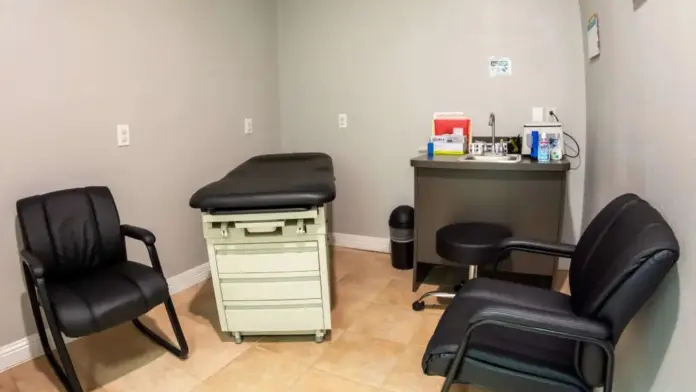



|
5
Top 10 in Partial Hospitalization Program
| Boca Recovery Center – Galloway is a drug and alcohol rehab in Galloway, NJ. They provide inpatient addiction treatment and medical detox. Boca Recovery’s New Jersey Drug & Alcohol Rehab, located in Galloway, New Jersey offers residential addiction treatment, medical detox, and medication-assisted treatment in an immersive treatment s | Treatments Programs Payment Options | Staff a Boca rehab are very caring to your needs my experience was amazing through out my recovery
Wal Williams
3 days ago
I went to Boca for detox and a short rehab stay. I can’t say enough about incredibly helpful and caring the staff was. Special shoutout to Mikaela, one of the therapists there and all of the techs and nurses. They guided and helped me along my journey to recovery.
Brian Marchioni
6 days ago
I have never been in any treatment facility for my addiction and I am so grateful that I was sent to Boca. I was scared and nervous about being away from home but I was immediately put at ease by the staff. I had no clothes, Bridget came to my rescue with clothes. Sissy, the housekeep, loved on me like a mother with everything I needed to build my self esteem. Ashley, my Therapist, gave me so many tools to not pick up again and assisted me with many coping skills. Brianna, the case manager, assisted me with all things FMLA and pay related with was great because I didn’t know where to start. The chefs, Joseph and Tyron fed me amazing meals to regain my strength and stay healthy. Kevin, the alumni coordinator, has given me his direct contact in case I need anything sobriety related. Overall this has been a life changing experience for me and I am grateful to have had this opportunity and I know that I have truly made life long friendships at Boca.
Sara Loper
3 weeks ago
| 
7 7 
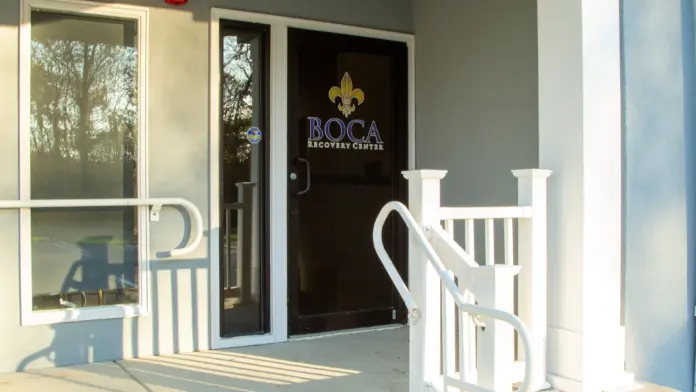


|
6
Top 10 in Partial Hospitalization Program
| All In Solutions Counseling Center is a mental health center and addiction treatment program in Boynton Beach, Florida. They provide a partial hospitalization program, an intensive outpatient program (IOP), an outpatient program, medication-assisted treatment, and mental health care for adults with substance use disorder. All In Solutions Counseli | Treatments Programs Payment Options | This place helped me when I felt like no one could, 5 stars to the techs, 5 to the therapists, and 5 to case management will love you guys for ever.
kyle Buchmaier
6 days ago
My experience at All in Solutions was absolutely the best it could be given the situation. The staff were absolutely amazing. With this course of recovery I’ve been given the keys for a bright future. It’s up to me to put my training to work in in my life.
JoJo Monte
1 week ago
Great for anyone looking to get clean
Quinn Elrod
2 weeks ago
| 
4 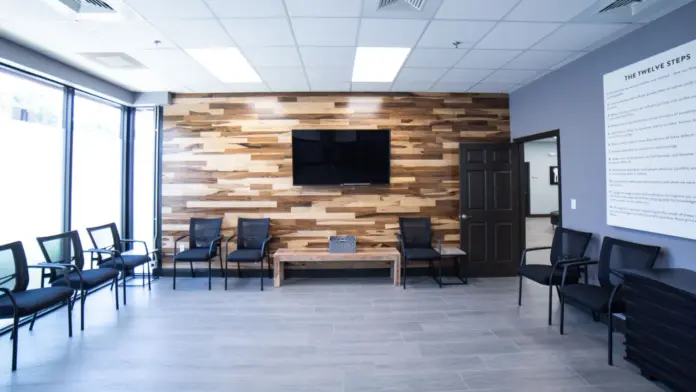



|
7
Top 10 in Partial Hospitalization Program
| The Boca Recovery Center is a luxury alcohol and drug rehab center for adults in Bloomington, Indiana. They specialize in cutting edge addiction treatment provided in a residential setting. One unique part of this alcohol and drug rehab in Indiana is the peaceful, secluded setting. If recovering in a clinical hospital setting doesn’t sound very a | Treatments Programs Payment Options | Its a great place
Andrea Youngblood
3 weeks ago
I had a wonderful experience at Boca recovery center they helped me with a lot of things, they gave me a lot of tools and resources that I currently continuing to work with.They have helped me in my recovery journey as I continue to be mindful of my triggers to prevent relapse. To all that are reading this may God of the universe continue to guide you on your recovery journey as well Amen! ☺️🙏
Diamond Louis
3 weeks ago
Staff was amazing. Very comforting and friendly. Made me feel at home while going through a difficult time. Thank you Boca Recovery Center
Mandy Jo
1 month ago
| 
6 6 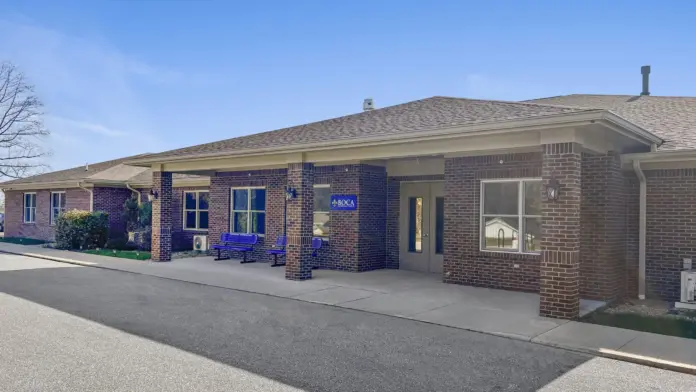

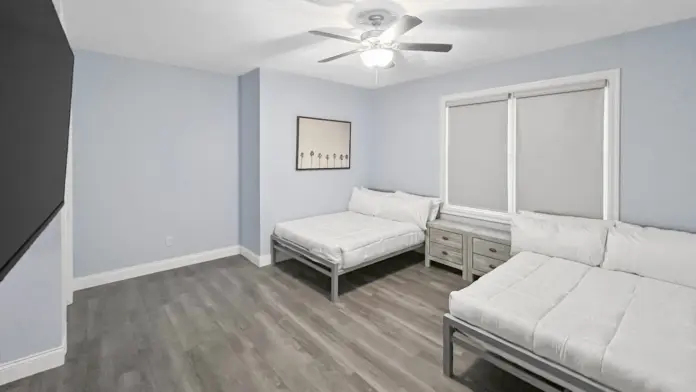

|
8
Top 10 in Partial Hospitalization Program
| If you’re looking for a Christian-based men’s drug rehab center, S2L Recovery in Woodbury, Tennessee, might be the place for you or your loved one. Located at the top of Short Mountain, and overlooking the green hills of Middle Tennessee, this residential and detox clinic boasts a one-to-one staff/patient ratio so there’ll always be someone t | Treatments Programs Payment Options | Coming from Canada, I was hesitant. But God knew that S2L was exactly where I needed to be. At 64 years of age, I was able to discover my true identity, purpose, and mission in Christ. They help you in trying to get clean and sober for sure. But what S2L and the staff are all about is the Gospel of Jesus Christ. That’s why it is so successful.
TIM TANNER
2 months ago
I’ve had the privilege of seeing the life-changing impact this ministry has on countless men & I can’t recommend it highly enough! God has His Hand on this ministry & I’m honored to see the Lord work in these men!
Hunter Stanfield
2 months ago
Come here with a open mind and heart. It can and WILL change your life in all ways. Trust the process and trust God! Could go on and on about how amazing this place, I’ll forever be grateful!
Trevor Woodard
2 months ago
| 
6 6 



|
9
Top 10 in Partial Hospitalization Program
| The Steps To Recovery addiction treatment center is situated in Levittown, Pennsylvania. At this drug rehab center, patients can expect to engage in a unique treatment approach that focuses on helping individuals recover through authenticity, intimacy, community connection, and transparency. Steps to Recovery offers a serene and private environ | Treatments Programs Payment Options | Good place, great housing
Nicole Rivera
3 weeks ago
Amazing support network and great staff lovely time with my stay at STR buck
William Perry
1 month ago
My experience at Steps to Recovery has been great for the most part, the people and the environment are very welcoming and comforting. I have had some issues that have come up, but they usually get resolved. My only main gripe is with some of the other clients at the community living house fail to clean up after themselves, and some do not know self control. But, the staff here is very professional and easy to talk to. I find that the opportunities here for my recovery journey are pretty good, although I’d like access to more holistic therapy resources. I’ve actually personally facilitated a Dharma meeting and will facilitate more in the future. I appreciate my time here at STR and am excited for the future with them.
Jerry Davis
1 month ago
| 
6 6 



|
10
Top 10 in Partial Hospitalization Program
| Located in Watsonville, California, Elevate Addiction Services provides alcohol and drug rehab services to men and women suffering from addiction. Their levels of care include detox, inpatient treatment, and outpatient treatment. Elevate Addiction Services provides a wide continuum of care that meets each person where they are in their recovery pro | Treatments Programs Payment Options | Holistic approach, great staff and facilities are accommodating and curriculum for recovery is by far my best experience and healing for recovery.
Travis
2 weeks ago
Elevate is such a wonderful community, with amazing people and an intelligent curriculum. Super thankful for my time here!
Leo Pollack
2 weeks ago
Great facilitators, healthy and supportive environment, a truly life changing program for sobriety!
Evan Newbrough
2 weeks ago
| 
5 5 



|

When Do Partial Hospitalization Programs Make Sense for Drug Rehab?
A PHP, or partial hospitalization program, provides a viable alternative to inpatient services for individuals needing high-intensity addiction treatment. Inpatient programs are not a good fit for everyone. For some, the cost of inpatient treatment may be a barrier. For others, the on-site residency requirement would interfere with their work or home responsibilities.
This resource guide will provide you a comprehensive overview of PHP so you know where it’s the best option for you or a loved one struggling with addiction. In this article you will learn:
- Differences between PHP and inpatient or other outpatient addiction treatment programs
- Benefits and what to expect from PHP
- How to pay for PHP treatment
- How to find the best PHP program for you
Key Facts About Partial Hospitalization
- The types and scope of therapies offered in PHP are closest to those found in inpatient treatment.
- PHP programs often treat both addiction and co-occurring mental disorders.
- PHP treatment focuses on acquiring tools for sustained recovery including a personalized relapse prevention plan, improved coping skills, and the development of a support community.
- Insurance may pay for some or all PHP treatment costs.
What is a Partial Hospitalization Program (PHP) Rehab?
Partial hospitalization programs (PHP) are a type of outpatient addiction treatment for people who are struggling with substance use. In contrast to inpatient treatment, patients who are enrolled in a PHP get to return home each day, after treatment. This makes PHP an ideal option for people with home commitments.
Where does PHP fit on the ASAM Continuum?
PHPs provide high-intensity services with 24-hour medical backup. This standard of care is listed as Level 2.5 on the 5-level American Society of Addiction Medicine (ASAM) Continuum of Care for Adult Addiction Treatment chart that provides insight into the appropriate level of care needed by people with substance abuse disorders.
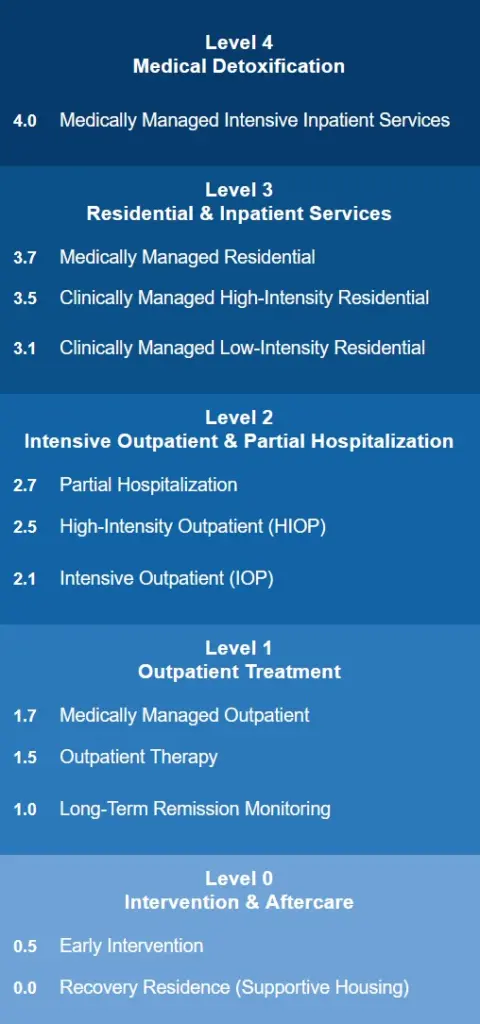
PHPs emphasize medical monitoring and structured therapies without overnight stays. Program participants spend 20 or more hours a week in treatment, most often during daytime hours.
PHP vs Inpatient Rehab
PHP programs and inpatient rehab share many similarities. Both have a diverse mix of therapies including medication management, individual and group therapies and coping skills training. Extra amenities like yoga, meditation or recreational activities are often available as well.
A partial hospitalization program does not offer 24-hour nursing services or room and board. Because clients return home each day, they are exposed to real-world triggers sooner than they would be during inpatient treatment. This requires PHP clients to immediately begin practicing the coping skills they are learning. Depending on the individual, this can be either an advantage or a disadvantage.
PHP vs. IOP (Intensity, Time Commitment, Cost)
PHPs and IOPs-–intensive outpatient programs–are both types of addiction outpatient treatment. PHPs, often used as step-down care following inpatient treatment, are more intensive and require greater time commitments than IOPs. PHPs provide 20+ hours per week of treatment; 25-35 hours over 5-7 days a week is common. IOPs typically offer about 3 hours a day of treatment over 3-4 days a week, for a total of 9-12 hours per week.
Both PHPs and IOPs offer structured therapies in individual and group sessions, using evidence-based therapies that can treat both addiction and co-occurring mental health disorders. IOPs involve roughly half the cost of PHPs, but they provide a lower level of structure and fewer options.
PHP vs. Sober Living & Peer-Support-Only Paths
Sober living homes and peer-support programs like 12-Step groups provide non-professional, non-clinical assistance to people in recovery.
Sober living homes offer affordable housing with shared accommodations, a substance-free environment, an opportunity to practice coping skills and an opportunity to receive support and companionship from peers. This makes them an ideal adjunct to clinical treatment.
Peer-support groups offer emotional support and socialization opportunities. Discussing addiction issues with people who have experienced similar circumstances reduces stigma and is often encouraging and motivating, especially during early recovery. However, there is no medical oversight, so peer-support-only options are not ideal for high-risk clients.
What Are the Components of a Partial Hospitalization Program?
While programs may differ slightly, PHPs are most like residential treatment in that you attend therapeutic programming almost every day of the week, in comparison to intensive outpatient programs that meet for several hours a day a few days a week.
A partial hospitalization program is highly structured and contains several core components, including:
- Time commitment: Typically, you can expect to attend a PHP program for at least 20 hours a week.
- Medical care: Many PHP programs simultaneously treat both substance use disorders and co-occurring mental health conditions, like depression. Studies show that treating two medical conditions that impact one another may improve overall recovery outcomes.
- Therapeutic care: PHPs offer several types of counseling including individual therapy, family counseling, couples therapy, group therapy, and mutual-aid recovery groups (like Alcoholics Anonymous or SMART Recovery). The goal of therapy is to uncover unhelpful coping strategies, gain new skills for healthier coping, develop relapse prevention strategies, and build recovery support systems.
Medication-Assisted Treatment (MAT) & Medical Monitoring
Medication assisted treatment, or MAT, is an evidenced-based therapy combining FDA approved medications with counseling to treat addiction.
Common MAT medications include buprenorphine that reduces cravings and withdrawal symptoms, naltrexone that blocks a drug’s euphoric effects and acamprosate that restores balance in brain chemicals and supports abstinence.
MAT treatment may involve regular medical checks, especially early on, to monitor vital signs, check for side effects, and adjust dosing. Lab work may be performed to track liver enzymes and to verify adherence to prescribed medications.
Individual, Group & Family Psychotherapy
Common psychotherapies used in addiction treatment include:
- Cognitive behavioral therapy (CBT) is a therapeutic approach designed to help individuals identify unhelpful thinking patterns and change them.
- Dialectical behavioral therapy (DBT) teaches emotional self-management and tolerance of emotional distress.
- Motivational Interviewing (MI) focuses on getting clients to recognize and strengthen their motivation for change.
- Contingency Management (CM) is an approach that uses rewards to help reinforce positive behaviors.
CBT and DBT sessions involve skills training on cognitive restructuring and emotional regulation. Contingency management provides vouchers for items like food or movie tickets as rewards.
Psychoeducation, Life-Skills & Vocational Support
Psychoeducation can reduce the risk of relapse. Teaching individuals practical, daily life skills such as coping strategies, communication skills and how to develop healthy routines, improves their chances for securing employment and building a stable life. These influences lower the likelihood of relapse.
Psychoeducation curriculum focuses on the science of addiction and teaching skills like budgeting and building a resume. Sometimes GED prep or liaison services with employers are included as well.
Holistic & Adjunctive Options (Mindfulness, Adventure, Art Therapy)
Adjunctive and supplemental therapies often available in PHP programs include options like:
- Yoga, guided meditations, and mindfulness practice to reduce autonomic nervous system arousal and encourage relaxation
- Art or music therapy to facilitate emotional awareness
- Experiential outings such as hiking or biking to foster self mastery and provide sober fun.
What Are the Core Benefits of a Partial Hospitalization Program?
There are several benefits to attending a partial hospitalization rehab program, including:
- Cost effectiveness: PHPs are often more cost-effective and affordable compared to residential addiction treatment because you are not paying for overnight stays, or 24/7 medical care.
- Flexibility: Day treatment programs offer structured addiction treatment with the flexibility and freedom to live at home and fulfill work, school or family obligations. Many PHPs offer programs in the evenings, weekends or during the day to fit around your schedule.
- Good transitional options: PHPs can ease the transition from inpatient rehab to outpatient rehab while reducing the risk of relapse.
- Recovery and therapeutic supports: Day treatment provides consistent access to peer support as well as individual and family counseling that can help sustain recovery. Therapies might include cognitive behavioral therapy, motivational interviewing, contingency management or dialectical behavioral therapy.
- Autonomy and accountability: Attending a PHP and returning home at night promotes a sense of independence and promotes personal accountability, which helps sustain long-term recovery.
- Recovery community: An essential part of long term recovery and sustained positive behavioral change is a recovery community.PHPs help you to develop relationships through mutual-aid meetings, like AA, or by developing friendships with others in recovery.
What to Expect in a Partial Hospitalization Program
The PHP setting may be a hospital or a residential rehab facility that runs day treatment programs. PHP treatment involves attending treatment for a large portion of the day, usually for 5-7 days a week and then returning home at night.
Partial hospitalization programs are often as intensive as residential programs in terms of the treatment components, and they require a similar time commitment. The primary difference is that with PHP you get to sleep in your own bed at night. It can be challenging to determine whether PHP is the right program for you or your loved one.
The American Society of Addiction Medicine suggests considering the following factors before making a decision:
- The severity of substance use disorder
- Risk of relapse
- If there is a supportive family and home environment
- Good physical health
- Readiness to change
- Emotional or behavioral issues that would benefit from psychological therapy
The main goals of PHP treatment are to support individuals with substance use disorder in achieving and sustaining recovery, developing a relapse prevention plan, enhancing coping strategies and developing a recovery support community.
Daily Structure: A “Day-in-the-Life” of PHP
A typical PHP schedule may include:
- 8- 9 am: Morning check in; vital signs recorded
- 9-10 am: Group session; discussion of practical coping strategies
- 10 am – 12 noon: Psychoeducation groups to learn new tools for relapse prevention
- 12 noon – 1 pm: Lunch
- 1pm – 2 pm: Process group; share personal challenges
- 2-3 pm: Skills building exercises with group practice
- 3-4 pm: Recreational activity, yoga or other class
- 5-6 pm: Dinner
- 6-7 pm: 12-Step meeting
- Evening: Homework; Journaling
Other General Expectations
Multidisciplinary Treatment Team Roles:
- Addictionologist provides evaluation, diagnosis, treatment planning and treatment services.
- RN provides medication management and patient education; also manages physical symptoms.
- Licensed Therapist treats both substance abuse and mental health disorders.
- Case Manager supports clients in navigating care plans and links clients to resources.
- Peer Recovery Coach uses their own lived experience to support clients and assist them in accessing needed resources.
Patient Responsibilities & Recovery Assignments
Patients are expected to attend greater than 90% of their PHP sessions.
Patients will also be expected to submit random drug screens and complete workbook tasks.
How Much Does PHP Rehab Cost?
PHP programs will vary in cost depending on the type of program and other variables. Without insurance, the average cost of PHP rehabs are:
$250 to $500
A PHP program is approximately $250 to $500 per day.
$7,500 to $15,000
A PHP program is approximately $7,500 to $15,000 per month.
Residential treatment is costlier than PHP, averaging between $10,000 and $50,000 per month, depending on the intensity of medical care and/or amenities. General outpatient treatment costs about $2,000 per month.
Paying for PHP
Variables affecting PHP program costs are:
- Insurance coverage: With private insurance, the cost of PHP treatment may be reduced by 80%. Depending on your plan, PHP might be considered an in-network service and therefore would be less expensive than out-of-network programs. Deductibles can also factor into the cost.
- Length of treatment: Some programs last 30 days; others may last up to 90 days depending on the type of program you choose.
- Services offered: Luxury rehabs with amenities like spas, acupuncture, massage and gourmet meals are usually more expensive than PHPs located in community clinics. But it’s also worth exploring the benefit of these additional services because they can make your rehab experience more enjoyable.
- Location: As with most goods and services, location impacts price. Luxury programs in California are often more expensive than similar programs in Minnesota, for example.
If addiction treatment coverage is not included in your insurance plan, you may have to pay out of pocket. However, many treatment centers offer payment plans, financing, and even scholarships to make treatment more affordable.
Is a PHP Addiction Treatment Program Right for You?
PHPs are beneficial for many people, even those with co-occurring disorders.
Broadly speaking, the most suitable candidates for a PHP include those who:
- Use drugs or alcohol daily, but do not have a physical dependence that requires detox.
- Have been diagnosed with a co-occurring disorder.
- Currently live in a stable, safe, supportive living environment
- Are unable to commit to inpatient rehab due to work, school, or child-care obligations.
- Need an affordable treatment alternative to inpatient rehab.
- Are in reasonably good physical health.
- Don’t need 24-hour medical care.
- Have transportation or can access public transportation to travel to and from PHP.
- Can practice the skills they learn in the PHP at home with relative ease.
- Usually attend follow up appointments when required.
- Are motivated to change and willing to engage in a program of recovery.
- Are PHPs Suitable for Everyone?
Unfortunately, PHPs may not be suitable for individuals with:
- Acute substance use disorder.
- Substance dependence that increases the risk of withdrawal symptoms when the drug use is stopped.
- Physical conditions that may need 24/7 medical care during addiction treatment.
- No at-home support or a triggering living environment
How to Choose the Right Partial Hospitalization Program
There are several factors to consider when choosing a partial hospitalization program. Not all programs are created equal, and everyone has different support and needs.
Some important factors to consider are:
- Do they accept your insurance? And is your plan in-network or out-of-network?
- What amenities does the facility have? (Would you be more comfortable in a luxury facility with upscale accommodations, or is a medical office setting okay?)
- Is there a waiting list for the program? If so, how long are you prepared to wait? If you do wait, will your addiction worsen – will you need to go to residential treatment?
- Do you need a specialized program for co-occurring disorders?
- Does the facility have medical staff and training in supporting medical needs if necessary?
- What are the credentials of the therapists? Are they masters-level clinicians?
- What kind of reviews has the facility and program gained online?
- Will the program fit into your lifestyle, and are there programs with times that work around your commitments?
- How far is the program from your home, and do you have time to commute and make your other commitments?
- How does this program differ from other programs? Do they have any special features or additions to the program that might make you favor them over other programs?
- Is the program 12-step based or evidence-based? Does that matter to you and how you may sustain your recovery?
- What are the other requirements of the program? Are you expected to attend sessions on completion of the program, or visit your PCP regularly?
- Is the facility disability friendly and can it accommodate your needs?
- Do you want a facility that is affirming for your gender, sexual orientation, or religion?
- What kind of aftercare is available when you complete the program? Does the PHP include a comprehensive relapse prevention plan?
Life After PHP: Continuing Care & Relapse Prevention
Recovery from addiction does not end when a PHP program ends. The need for ongoing support remains as you transition from PHP treatment to everyday life.
Next steps that facilitate a gradual and effective step-down in treatment intensity include:
Step-Down to IOP, Outpatient & Sober Living
Transitioning to a less intensive IOP program following PHP treatment helps bridge the gap between highly structured support and more independent living.
Ideally, as part of your PHP aftercare plan you should schedule your first IOP session prior to discharge from PHP, so that there is no lapse in treatment. After IOP, regular outpatient treatment can be another step-down to allow you to gradually re-integrate into your work and home life with new sober lifestyle tools.
For many, transitioning to sober home living helps to maintain therapeutic continuity by providing a drug-free, supportive environment. Peer-to-peer companionship and shared household roles and responsibilities encourage personal accountability. Participating in 12-Step meetings with house mates can strengthen one’s commitment to sobriety, especially in early recovery.
Relapse-Prevention Planning & Recovery Capital
Relapse prevention planning is a key component of a successful aftercare plan. Build recovery capital, internal and external resources that you can use to sustain recovery. This could be new coping skills, a support system, community resources, and necessities like a job, housing, and transportation. Know your relapse triggers and have emergency contacts available.
Alumni Programs, Peer Support & Family Involvement
As part of your aftercare plan, attend alumni meetings, stay in touch with a peer coach or sponsor in-person or by phone, and keep regular contact with family for at least six months.
Frequently Asked Questions About PHP
On average, PHP lasts about 4-6 weeks. Program length can be adjusted to assure successful attainment of clinical milestones. Factors such as the severity of addiction and the presence of co-occurring disorders can extend the time spent in a PHP program.
PHPs try to accommodate work or school attendance schedules. Sessions typically run from 9 am till 3 pm, which allows for evening classes or afternoon shift work. But some PHPs have more flexible schedules and offer evening or weekend sessions.
PHP employs a non-punitive approach. If you should relapse, you should immediately contact your treatment team. They will perform a clinical review and may possibly refer you to detox. Upon returning to regular PHP programming, you will be provided intensified therapy and other adjustments to your care plan, as needed.
Many PHP programs provide shuttle service to the program location within a 15-mile radius. Shuttle riders are picked up and returned to their homes. If you need to use public transportation, public-transit stipends are commonly offered.
An on-site psychiatric evaluation identifies co-occurring disorders and related needs. Treatment is provided for both substance abuse issues and co-occurring disorders simultaneously. Medication management and specialized integrated group therapy topics, such as trauma-informed care, are provided as appropriate.
Find Treatment Near You
Visit Rehab.com to find PHP treatment centers near you. Search by location, level of care, insurance or specialized program. Top-ranked centers in your city or state can be easily found using our rehab scoring methodology.
Not sure where to start? Call the number below to discuss your treatment options and verify your insurance.
Call A Treatment Provider
For a conversation about what treatment options are available to you.
Make a Call
Addiction Centers Nearby Partial Hospitalization Programs
Finding facilities near you…

